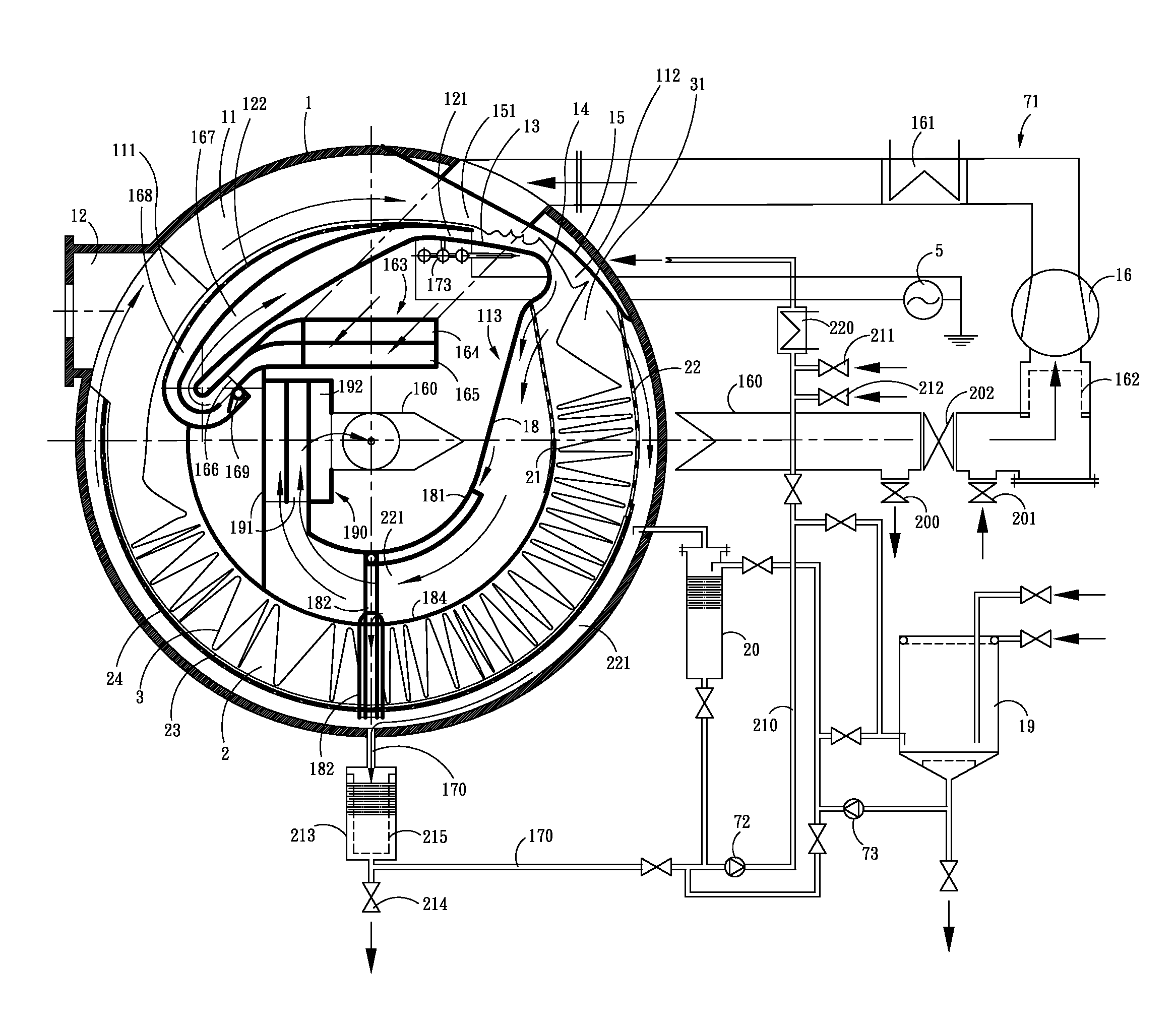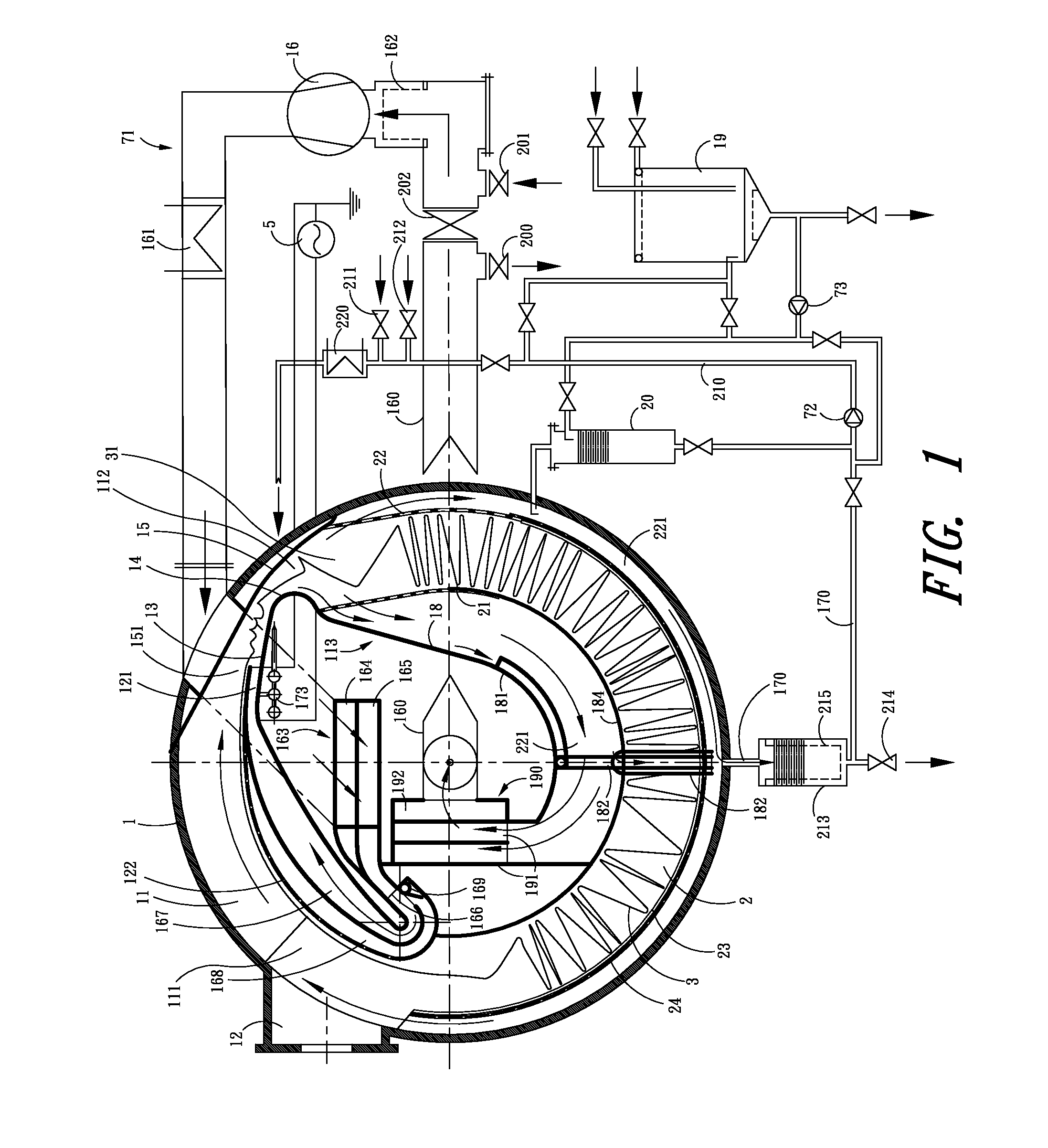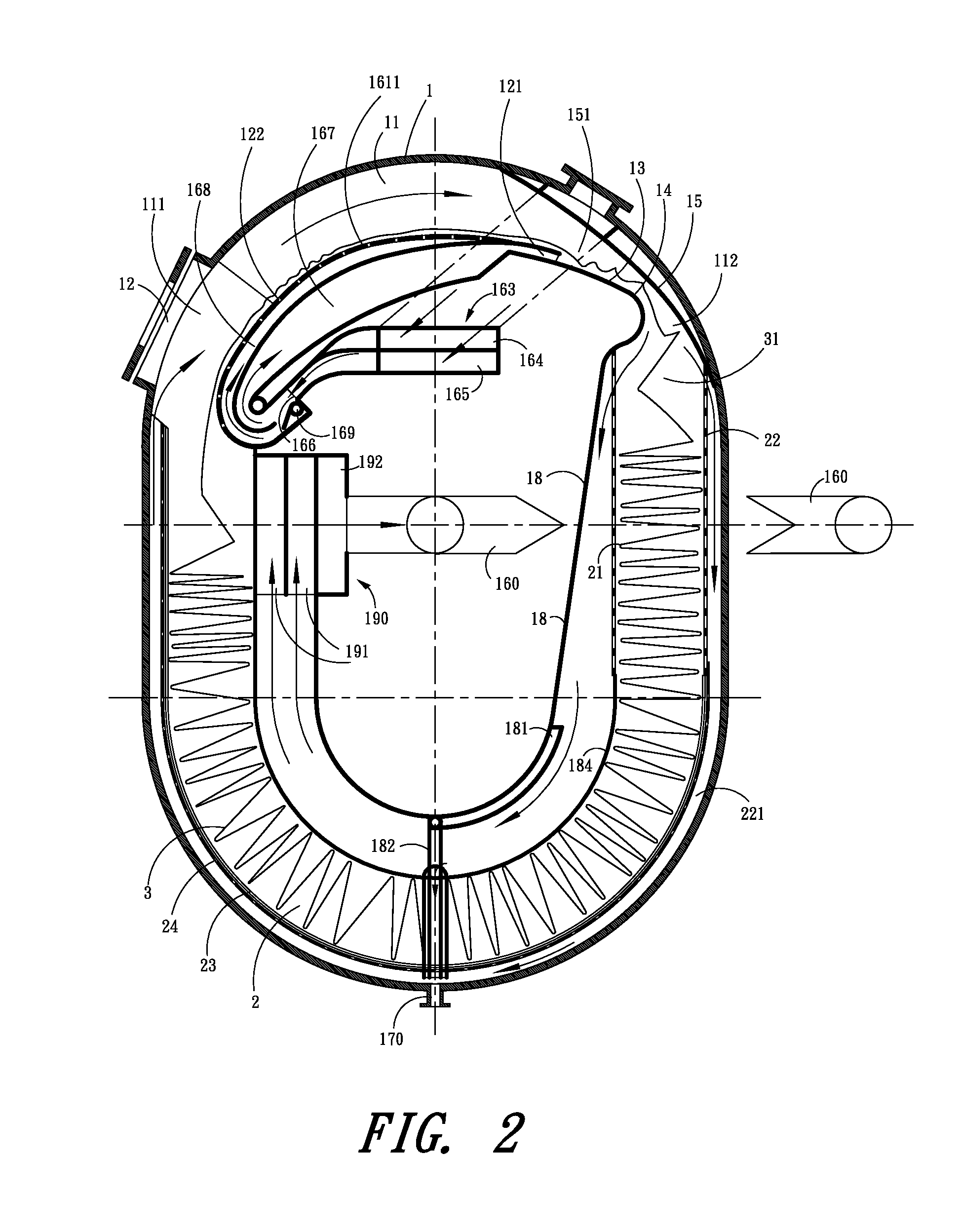However, most dyeing machines of the prior art have only a
single application and there has not been any dyeing machine that has multiple functions and
multiple applications and that is environmental friendly on the market.
Because water has been used as the medium in the wet type process of
textile products, the
textile dyeing and finishing industry has been discharging a lot of
contaminated water.
Such trend is a tough challenge to the
textile dyeing and finishing industry.
Therefore, they consume an excessive amount of water and energy and seriously pollute the environment.
Also, their processing costs are too high and they seriously damage the eco
system.
Many problems and disadvantages still can not be solved in the dyeing machines of the prior art (including the spread-out type and non-spread-out type air flow dyeing machines and the traditional injection type dyeing machine).
Such problems and disadvantages include the right portion of the fabric having a different color from that of the left portion, the inconsistency in color for the same patch of fabric, uneven application of the dyes, the fabric circulation wheel being unable to move in
sync with the nozzles, the fabric not able to move fast enough, damages caused by friction and collision, the fibers of the fabric being broken by the excessive amount of force exerted by the nozzles, the clogging of the nozzles and the filtering units, the fabric unable to have a pleasant feel, the low efficiency in the bio
enzyme process, processes being carried out
too slowly, the machine not having enough functions and hence the processes being limited, excessive use of energy and water, etc.
Also, the fabric circulation wheel poses a danger to the users.
In addition, finished fabric may not have a good feel.
Poor design is the main reason for all of the aforesaid problems.
For example, the inconsistency in color is caused by the more-than-one processing tanks and the uneven division or distribution of the dyes and air flow.
It is difficult to equally divide the fluid or flow in a tube into two exactly equal parts (in the prior art, a
single tube is divided into two tubes, two tubes are then divided into four tubes and four tubes are divided into eight tubes), resulting the inconsistency in color.
In addition, a modification or re-dyeing may be needed when there is an unsatisfactory result and such modification or re-dyeing would be a waste of energy and water and increase the production cost.
If the dye dissolves in an excessive amount of the operating solution in the dyeing process, the operating solution may reduce the contact and interaction between the dye or processing fluid and the fabric.
However, it is difficult to process and purify the residual solution after the dyeing process.
Regarding dispersal dye, which has a level of
solubility, because it does not have
ion radicals, the dyeing process is quite difficult to carry out.
A large amount of dispersion agent has to be used to make it suspending in the operating fluid and the state of such suspension is difficult to maintain.
In addition, the residual solution is difficult to purify.
With regard to
natural fiber, it has a complicated structure and many cavities, which are filled with air.
Therefore, it is difficult for the dye to enter the fibers and dyeing process takes a longer time.
In the past, dyeing at the
boiling point is used for the dyeing of
wool and such dyeing takes a longer time.
Therefore, such dyeing consumes more energy and
wool fiber can be damaged.
In addition, because
reactive dye may react with water at high temperatures and in alkaline solution, the efficiency of dyeing is reduced.
Also, after the dyeing process, both the residual solution of the dyeing and the unfixed dyes in the post-treatment are highly polluted solutions.
 Login to View More
Login to View More  Login to View More
Login to View More 


